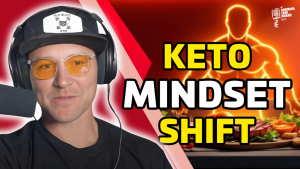Podcast advertising is no longer a test budget experiment. In 2025, it has become one of the most effective and trusted forms of digital marketing.
As social media algorithms make organic reach unpredictable and paid ads grow more expensive, brands are turning to podcasts to build authority, connect with engaged audiences, and see measurable results.
The data from 2025 paints a clear picture. Podcast ads deliver stronger engagement, higher recall, and better conversion rates than almost any other digital format.
In this article, we will explore how podcast advertising has evolved, what the latest numbers say about reach and ROI, and how listener behavior is shaping the future of brand storytelling.
For a broader overview of the industry, check out Podcast Statistics 2025 and Why It Matters for Professionals, Business Owners & Advocates.
Podcast Advertising in 2025: The Big Picture
Record Growth Across the Industry
According to the Interactive Advertising Bureau (IAB), global podcast ad revenue will exceed 4.2 billion dollars in 2025. This represents a 17% increase from 2024, continuing a decade-long upward trend.
The United States remains the largest market, accounting for over 60% of total podcast ad spending. However, international markets like the United Kingdom, Australia, and the Philippines are catching up quickly as listenership grows worldwide.
Podcast advertising is now viewed as a primary brand channel, not a side experiment.
The Rise of Branded Storytelling
Brands have shifted from transactional ad placements to strategic storytelling. Instead of pushing products, advertisers are creating campaigns that educate, inspire, and align with audience values.
Spotify’s 2025 Brand Lift Study found that podcast listeners are 2.3 times more likely to consider purchasing from a brand that tells stories relevant to their interests.
Authenticity sells, and podcasts are the perfect medium for it.
Who Listens to Podcast Ads
Listeners Pay Attention
Unlike many digital ad formats that people skip or scroll past, podcast listeners tend to stay tuned. Edison Research reports that 71% of podcast listeners say they pay attention to podcast ads.
Compare that to social media, where less than 10% of users recall seeing a specific ad they scrolled past.
Podcast ads work because they blend seamlessly into the listening experience, often delivered by trusted hosts.
Host-Read Ads Build Credibility
Host-read ads remain the gold standard in podcast advertising. Listeners view them as genuine endorsements rather than corporate messages.
According to Nielsen’s 2025 Podcast Ad Effectiveness Report, host-read ads deliver a 68% higher brand recall rate than pre-recorded spots.
When a host they trust recommends something, listeners take it seriously.
Listener Behavior in 2025
Audio as a Daily Companion
Podcasting has become part of daily routines. People listen while commuting, exercising, or working from home. This behavior creates a consistent, low-distraction environment for advertisers.
Recent data from The Infinite Dial 2025 shows that more than 50% of podcast listeners consume content during multitasking activities, but they rarely skip ads because they feel part of the show’s flow.
Unlike visual ads, podcast ads do not compete for attention. They live in the listener’s focus zone.
Trust is the Currency
The modern listener is skeptical of most marketing, but podcasts remain a safe space for authentic conversation.
A 2025 SuperListeners Study revealed that 62% of podcast fans trust ads read by their favorite hosts, compared to only 15% who trust social media influencers.
That trust translates directly into buying behavior.
ROI: The Numbers That Matter
Better Conversion Rates
Podcast advertising delivers stronger results per dollar spent. A study by Claritas in 2025 found that podcast ads generate up to 3 times higher brand recall and 1.5 times higher conversion rates than traditional digital audio ads.
The reason is context. Podcasts reach audiences when they are actively engaged in learning or being entertained, not when they are distracted by other tabs or notifications.
Cost Efficiency
Podcast ad pricing varies by niche and reach, but the average cost per thousand impressions (CPM) remains competitive. In 2025, average CPMs range from $18 to $50 depending on the podcast’s size, topic, and engagement.
Niche podcasts with highly targeted audiences often charge higher CPMs, but brands see better ROI because the listeners are aligned with their ideal customer profile.
Attribution Technology
Podcast ad tracking has improved significantly. Dynamic ad insertion, custom URLs, and pixel-based analytics allow brands to measure engagement and conversions more accurately.
Spotify and Podbean both rolled out new AI-based tracking tools in 2025 that can measure ad effectiveness within 48 hours of airing.
This data-driven transparency has given brands the confidence to scale their podcast investments.
The Types of Ads That Work in 2025
1. Host-Read Ads
These remain the most effective type of podcast ad because they are authentic and personalized. The host’s tone, delivery, and familiarity create emotional connection and credibility.
2. Sponsored Segments
Brands are sponsoring segments or recurring topics instead of single spots. For example, a finance podcast might feature a weekly “Smart Money Tip” brought to you by a fintech company.
This format integrates the brand naturally and reinforces long-term association.
3. Branded Podcasts
Many brands now produce their own shows to tell stories, interview industry leaders, or educate consumers. Branded podcasts help companies control their message while providing real value to listeners.
According to Podnews, branded podcasts grew by 27% in 2025, with many outperforming traditional paid ad campaigns in long-term engagement.
4. Programmatic Ads
Automation is becoming more common, especially for smaller advertisers. AI-driven programmatic ads allow brands to target specific audiences across multiple shows.
While programmatic placements are less personal than host reads, they are cost-efficient and scalable.
Why Podcast Advertising Outperforms Other Channels
1. Attention Without Interruption
Listeners choose podcasts willingly, which means they are receptive to messages within them. This creates an organic space for storytelling.
2. Longer Shelf Life
Podcast episodes remain online indefinitely, continuing to generate impressions long after their release date. A well-placed ad can yield engagement for months or even years.
3. Better Targeting
Podcast platforms now allow brands to target by topic, demographic, and even listener mood. This precision drives higher conversion and more efficient spending.
4. Authentic Voice
Unlike other advertising channels, podcasts preserve authenticity. When listeners feel the message aligns with their interests, it builds genuine affinity.
Listener Insights: What Motivates Action
A 2025 Podsights survey revealed the top reasons listeners act on podcast ads:
- 45% say they trust the host’s recommendation
- 32% value the product’s relevance to the show’s topic
- 18% enjoy the storytelling style of the ad
- 5% respond to promotional offers or urgency
These findings prove that authenticity and alignment drive action more than discounts or aggressive calls to buy.
How Brands Are Using Podcast Advertising
Case Study: The Authority Approach
A leadership development company partnered with 20 niche business podcasts focused on entrepreneurship and management.
Instead of generic ads, the hosts shared personal stories about how leadership skills shaped their careers. Within 90 days, the company saw a 42% increase in qualified leads and a 30% rise in booked consultations.
The ads worked because they felt like part of the conversation.
Case Study: The Educational Campaign
A nutrition brand created a 12-episode branded podcast series explaining the science behind clean supplements. The campaign doubled website traffic and boosted long-term customer loyalty.
Education, not hard selling, built credibility.
Challenges in Podcast Advertising
Despite strong results, brands face new challenges in 2025:
- Oversaturation in certain genres, making it harder to stand out
- Listener fatigue when ads sound too scripted
- Rising competition for premium placements
- The need for more creative ad formats that blend storytelling with promotion
Brands that innovate with value-driven storytelling will continue to thrive.
The Future of Podcast Advertising
The next phase of podcast advertising will combine creativity with data. AI and analytics will allow for real-time campaign adjustments, while new immersive audio formats will enhance listener engagement.
Expect to see more integration between podcasting and video, giving brands cross-platform reach. Hybrid shows that stream on YouTube and Spotify are already changing how ads are designed and delivered.
But even as technology evolves, one thing remains the same: authenticity drives performance.
What This Means for Brands
Podcast advertising in 2025 is not about shouting louder. It is about being more relevant, more human, and more aligned with the audience’s interests.
Brands that treat podcast advertising as relationship-building rather than sales generation will win.
The most successful campaigns will come from brands that:
- Choose shows that share their audience values
- Empower hosts to tell authentic stories
- Measure success through both awareness and trust
Podcast advertising has reached a new level of maturity in 2025. It delivers unmatched attention, trust, and ROI compared to traditional digital ads.
Listeners are more engaged, data tracking is more accurate, and the storytelling potential has never been greater.
For founders, CEOs, and experts, podcasting is the most powerful platform to amplify your message and connect with people who actually care about it.
This is exactly why we built Command Your Brand. We help visionary leaders take control of their narrative, build authority, and expand their reach through strategic podcast guesting and placement.
Your voice deserves to be heard. Book a call with Command Your Brand today.
For deeper insights, visit Podcast Statistics 2025 and Why It Matters for Professionals, Business Owners & Advocates.




